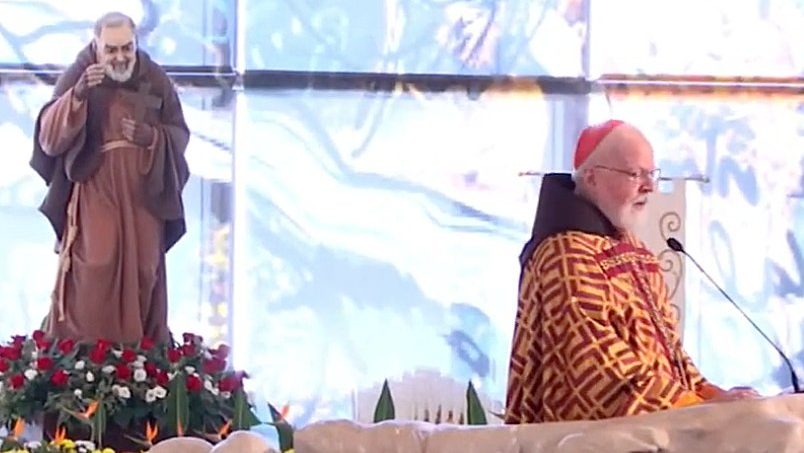Padre Pio shows the world the power of bearing physical suffering with patience and love, Cardinal Seán O’Malley said at Mass for the Italian saint’s feast day on Friday.
O’Malley, the archbishop of Boston, celebrated Mass on Sept. 23 in San Giovanni Rotondo, Italy, in the Church of Saint Pio of Pietrelcina.
“Padre Pio carried the burden of the stigmata for five decades, this and so many other physical sufferings were borne with love and patience. In a world where pain is seen as the greatest evil, Padre Pio shows us the power of the cross,” O’Malley said.
“He shows us that the greatest evil is not pain, but sin and selfishness,” the cardinal continued. “Pain can be a two-edged sword that turns us in on ourselves, leads to self-pity, anger, or despair. When the cross is born with love and in union with Jesus it is life-giving and leads to resurrection.”
O’Malley, 78, has been a member of the Order of Friars Minor Capuchin since 1965. Padre Pio, one of the 20th century’s most beloved saints, was also a Capuchin friar.
Pio, born Francesco Forgione in 1887, made solemn vows with the Capuchins at the age of 19. His life was marked by illness and physical suffering, including receiving the visible stigmata — bleeding wounds corresponding to the five wounds Christ received at his crucifixion — in 1918.
His desire to create a hospital founded on the principle of caring for both the body and soul of the sick and suffering also led him to establish Casa Sollievo della Sofferenza, or Home for the Relief of the Suffering, today a state-of-the-art private hospital and research center.
Padre Pio’s mission, Cardinal O’Malley said, “was a mission of mercy, to those who were sick physically or spiritually and, in that context, he announced the good news of the Gospel.”
“The confessional and the Casa Sollievo della Sofferenza are just two of the ways Padre Pio manifested the loving mercy of God in the world convulsed by pain and suffering and sin,” he noted.
The cardinal quoted a line from the book “Padre Pio: The True Story.” The author, Bernard Ruffin, wrote that “Padre Pio made God real.”
“In a world of unbelief, the presence of holiness brings light and peace into a world of darkness and chaos,” O’Malley said in his homily. “The saints next door, and the saints that God magnifies with his graces, are a gift to increase in us a nostalgia for homeland yet unseen, for which we were created.”
He recalled when Pope Francis said that the two paths to holiness are prayer and community.
“Padre Pio,” he said, “is an outstanding example of this in a society that has largely abandoned prayer and the Sabbath observance, but this holy man teaches us that prayer brings the power of the cross into our lives and allows us to enter into the mystery of the Eucharist.”
Many people no longer attend Mass on Sundays because they do not know how to pray, Cardinal O’Malley said: “Today we stand in this holy place to ask Padre Pio to pray for us and teach us how to pray, to love, and to heal.”
“May he lend us that ladder that will allow us to climb the cross and lovingly pull out the nails from the hands of our brothers and sisters who are, as Mother Teresa used to say: ‘Christ in a distressing disguise.’”
“Today we stand before this great saint and say thank you for showing the world that God is real and that the only real success in life is holiness,” he said.

